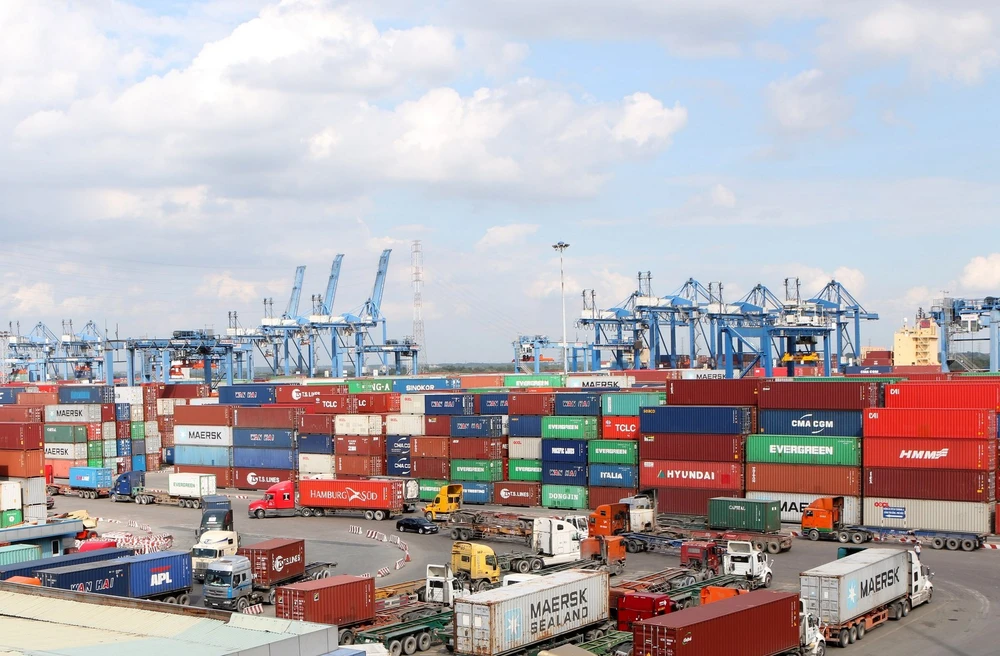
JOURNALIST: - Sir, in context of a limited land fund, the challenges to improve infrastructure and reduce traffic jams around ports seem to be too many. So how do you think Ho Chi Minh City will be able to develop the logistics industry as expected?
Dr. NHAN CAM TRI: - The demand for logistics services is definitely increasing in Ho Chi Minh City. The City is the largest economic center of the country, the main hub for import and export activities, for goods distribution of the whole southern region, and the ASEAN region in the future. However, the expected growth of the logistics industry depends on good planning capability in this sector. When we look at Singapore as an example, we see that Singapore has a very small covered area, much smaller than Ho Chi Minh City, very narrow roads, and buildings very close to each other, however they take full advantage of every inch of land and use it very effectively. Singapore is currently one country with the best logistics services in the world.
- Sir, one of the main logistics centers of Ho Chi Minh City is Cat Lai port, but the new project will establish logistics center in seven other locations. Do you think this will be feasible?
- Cat Lai port is not actually considered a logistics center in its full sense of the word. Logistics centers are areas where activities relate to the transport and distribution of goods of many domestic and foreign enterprises, under state management of customs, taxes, specialized inspection centers, integrated services for the supply chain, covering of inbound and outbound logistics, and flow of raw material and product delivery to end consumer.
The work involves purchasing, storage, transportation, forwarding, customs clearance, empty container consolidation and various other value-related services such as packaging, labeling, processing, assembling, and retrieval, which integrate with many means and modes of transport such as roads, railways, waterways and aviation.
The location of the logistics centers must be near source of goods such as factories, near an airport or seaport to save time and cost, and avoid causing traffic congestion. In terms of area, logistics centers must be large enough for the integration of all the above services. Most logistics centers in the world usually have an area of about 400 hectares or more.
When considering the full range of required criteria, there is currently no location in Ho Chi Minh City that can satisfactorily cover these needs. So we have to accept relative solutions and improve on them gradually. The selection of existing ICDs such as ICD Long Binh, Cat Lai port, and Hiep Phuoc port are good solutions because we take advantage of available infrastructure. I think if the Ho Chi Minh City government is determined to build logistics centers, these areas will be the most feasible and economical options.
- Sir, there is an opinion that in the future Ho Chi Minh City will no longer be the center for import and export for the country but become a center for services and commerce. So should we invest nearly one hundred trillion dong in the development of logistics centers and is spending this huge amount reasonable?
- Even though Ho Chi Minh City will no longer be an import-export hub in the future, and is now moving to becoming more of a commercial service center, it is still advisable to build logistics centers, because there is a need for transshipment and distribution points for the busiest economic center in the country.
As for capital, it is difficult to evaluate whether to invest or not. According to the project, the total capital demand for the development of the logistics industry in the period 2020 until 2030 in Ho Chi Minh City is about VND 95,800 bn. An evaluation committee must be set up to accurately assess his amount and clarify into specific categories. Investing in infrastructure for a standard logistics center needs a large amount of capital.
- Sir, the project mentions promotion of vocational training in logistics. In your opinion, what is an effective solution to improving human resources?
- It is true that human resource for logistics centers is currently in short supply, because the number of universities specializing in logistics are still very few in number. Currently, enterprises involved in the logistics industry are recruiting personnel from fields like foreign trade, import-export, and international businesses. These industries are closest to the logistics industry.
In my opinion, the solution to resolve the human resource problem in logistics is for all logistics companies to be more enthusiastic about coordinating training with universities to help fill the gap and shortfall. Seaports and airports need to work with universities to train more university students. Logistics and seaport associations should have many policies to support universities in providing related training. Schools also need to open more training courses in logistics to meet the future demand in this field.
- Thank you very much.




















